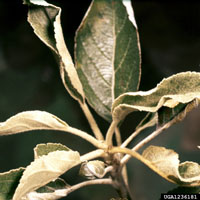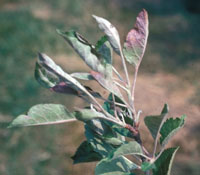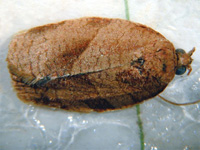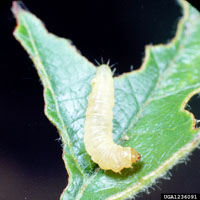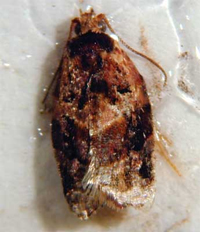Extension > Garden > Diagnose a problem > What's wrong with my plant? > Deciduous Trees > Crab Apple > Rolled or deformed leaves
Crab Apple > Leaves > Rolled or deformed leaves
1 of 3
Powdery Mildew
Podosphaera leucotricha
- Part or all of infected leaves are covered in white-gray, felt-like patches
- Infected leaves will curl, twist, or fold upward
- Infected blossoms are distorted, discolored, and covered in white powdery fungal growth
- Infected fruit have bronze, corky streaks, that are skin deep
- More information on Powdery Mildew
2 of 3
Obliquebanded Leafroller
Choristoneura rosaceana
- Early season larvae feed on the undersurface of a leaf along the midrib or other large vein
- Early season larvae feed inside bud clusters and developing fruit, resulting in fruit drop or corky scars on the fruit
- Late season larvae can scar the fruit
- Larvae are yellow-green and 1” in length when mature
- Adult moth is reddish-brown with brown bands on the wings
- More information on Obliquebanded Leafroller
3 of 3
Redbanded Leafroller
Argyrotaenia velutinana
- Larvae skeletonize leaves from the underside, folding and webbing the leaves together
- Fruit injury is usually shallow with ragged edges and thick, corky tissue over the damaged area
- Larvae are green with a green head, and reach about ½" at maturity. Larvae are yellow-green and 1” in length when mature.
- Larvae are present early May – June
- Adults have distinct red-brown bands on the forewings that form a V-shape when at rest, and are about ¼" in length
- More information on Redbanded Leafroller



